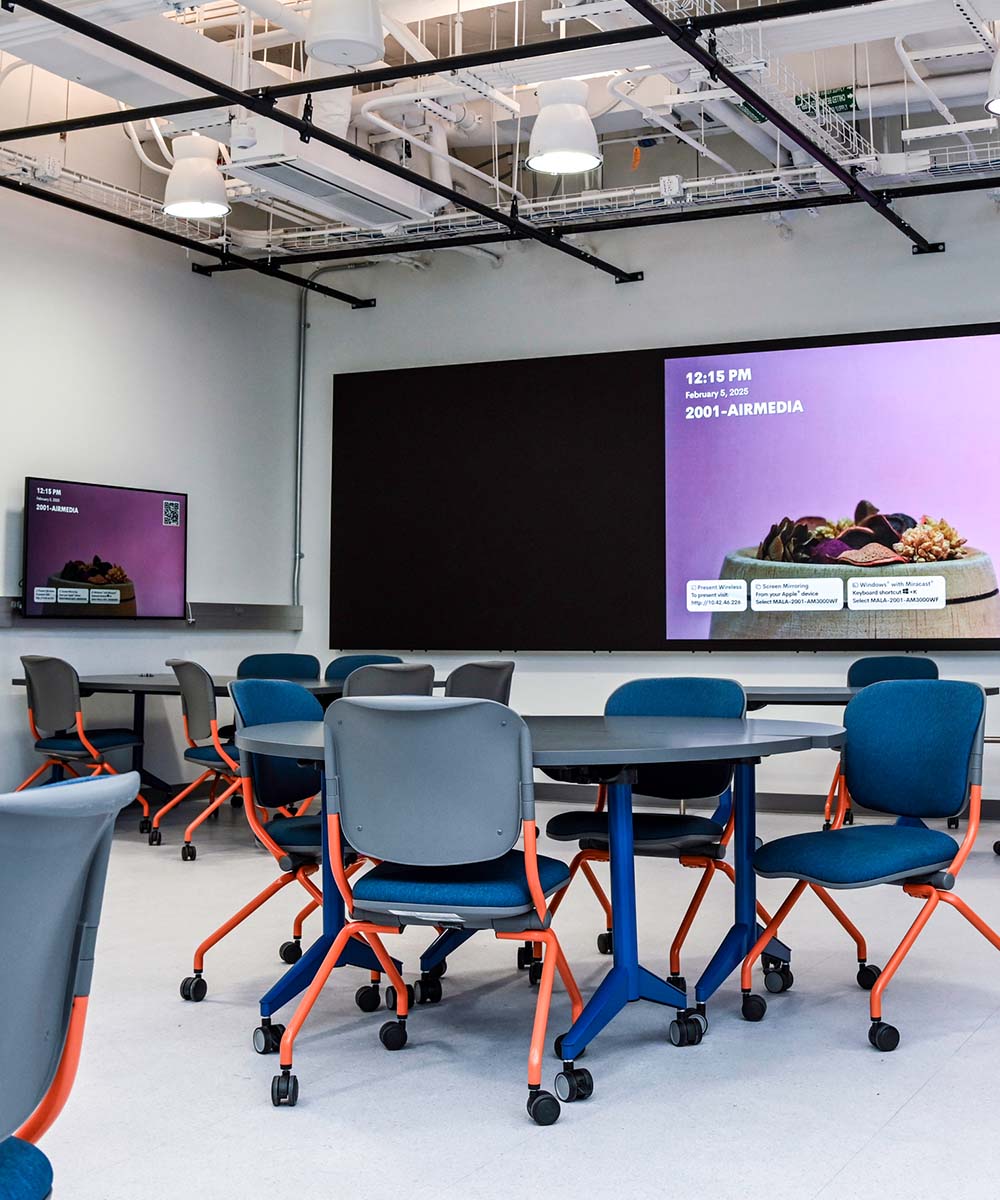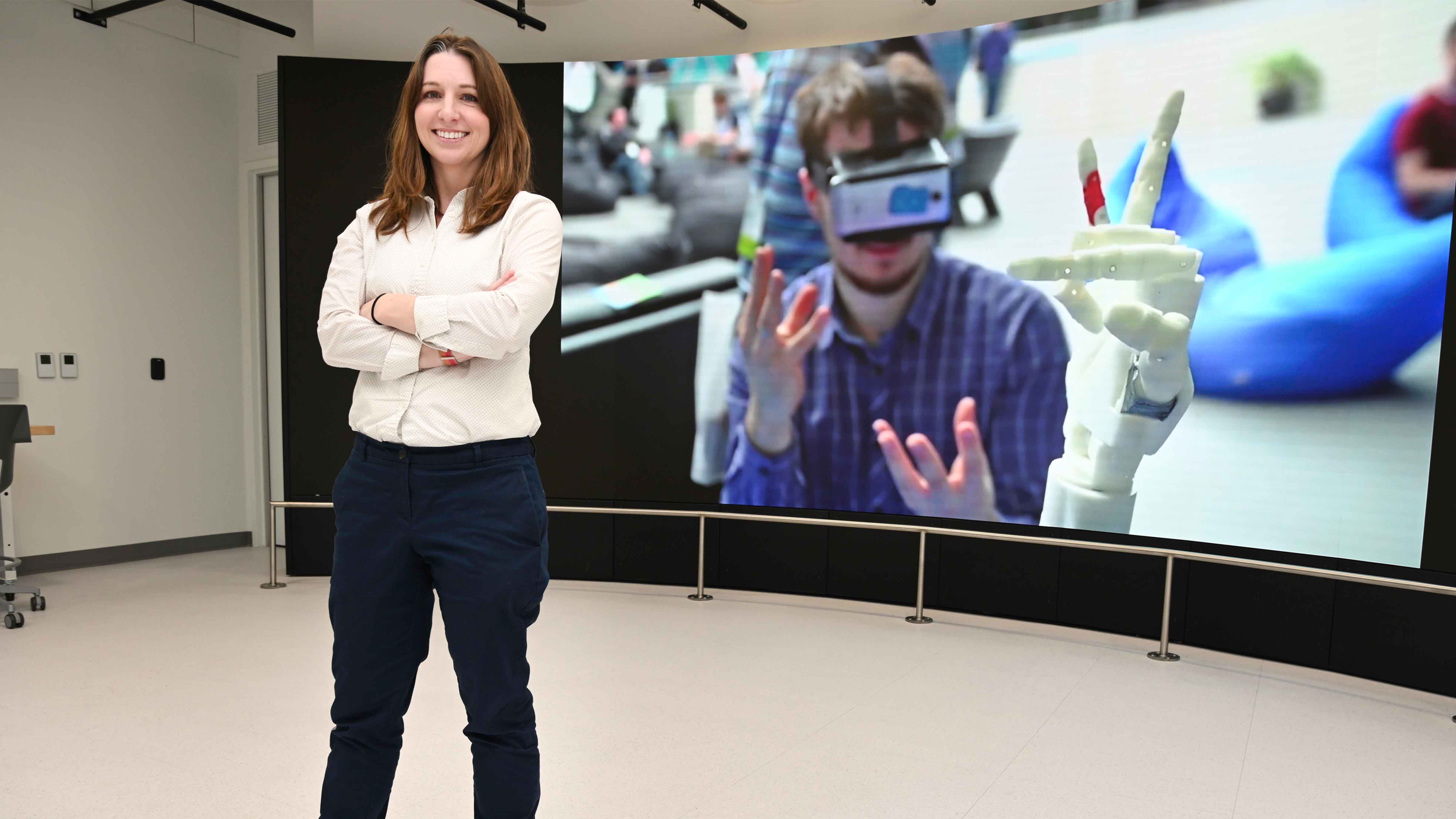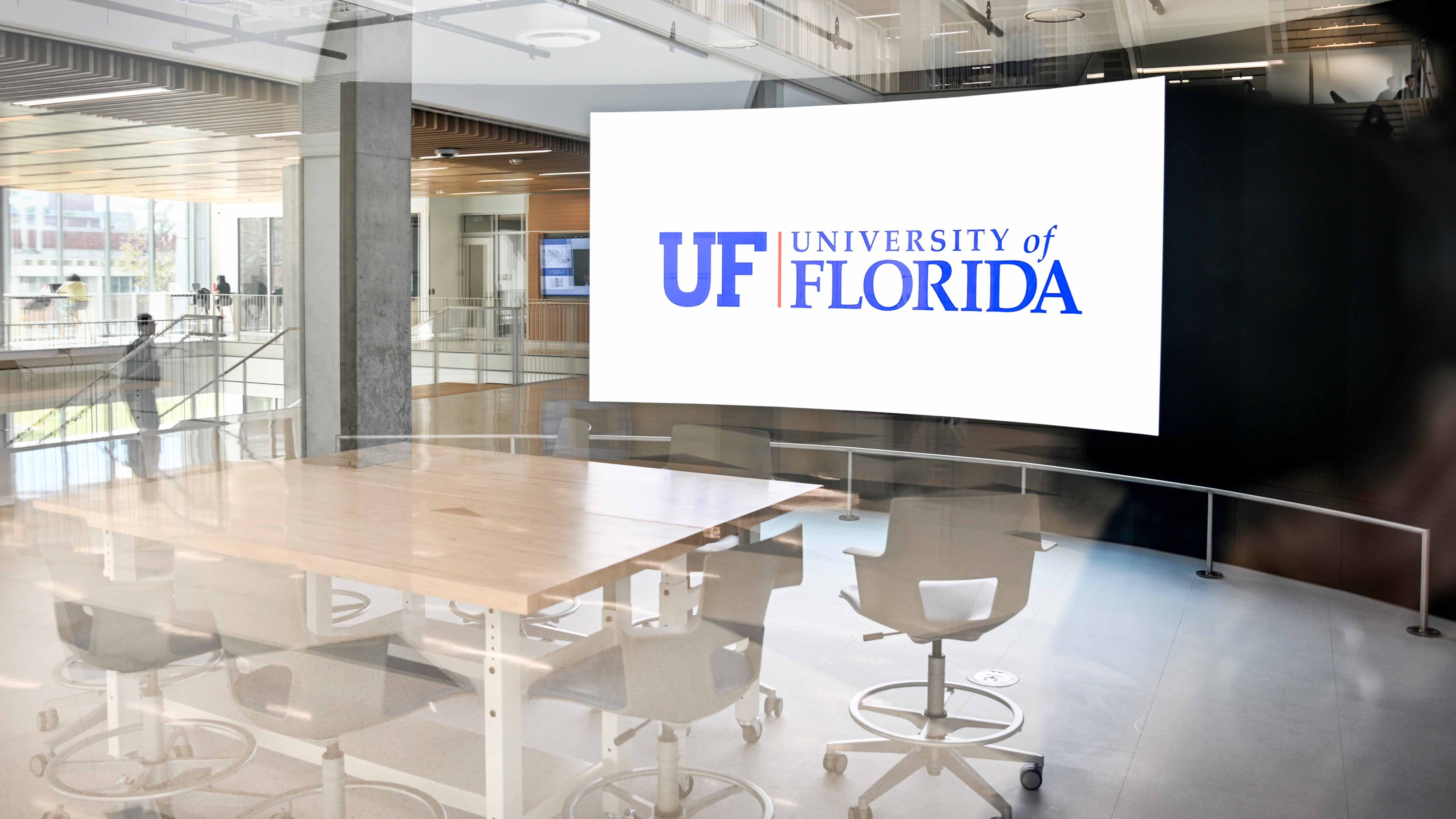Named after NVIDIA co-founder Chris Malachowsky, the University of Florida’s newly constructed Malachowsky Hall for Data Science & Information Technology in Gainesville, FL, is a seven-story, 263,440-square-foot facility dedicated to the advancement of AI, computing, and data science. Completed just over a year ago, it houses faculty and students from the College of Medicine, College of Pharmacy, Department of Computer Information & Information Science & Engineering, Department of Electrical & Computing Engineering, the Florida Institute for Cybersecurity Research, the Florida Semiconductor Institute, and the Warren B. Nelms Institute for the Connected World.
[SCN Exclusive: Signage Ahoy!]
One of UF’s primary missions is to offer all its students, regardless of academic focus, the opportunity to receive education on AI and its relevance in their chosen discipline. UF also works with other universities, colleges, and K-12 schools, helping them incorporate AI education into their own programs. Malachowsky Hall plays a starring role in these efforts.
Among the key spaces in Malachowsky Hall are the AI Lab, IOT Lab, and VR/Robotics Lab. Each features large Absen video displays that faculty and students utilize for data visualization. The systems were custom designed by the manufacturer in collaboration with UF’s in-house AV team, and integrated by MDM Commercial, an integration firm based in Ponte Vedra Beach, FL.
Monitoring Mosquitos and More

Hans van Oostrom is chair and associate professor in UF’s Department of Engineering Education, which, at 6 years old, is the university’s youngest department. The department oversees two AI master's degrees, along with the undergraduate AI certificate program that is open to all UF students. “Our focus is to improve engineering education through research methods and best practices,” he explained.
Currently, the VR/Robotics Lab is being used primarily for robotics projects. Students run programs and simulations off site and then come to the lab to monitor how their robots perform in a physical environment. Van Oostrom said the department is striving to develop VR technologies for education, but these efforts are still in their infancy. However, the lab is already equipped with the infrastructure to accommodate the sensors and camera systems required when more virtual reality-focused projects come to the forefront.
Swarup Bhunia, director of UF’s Warren B. Nelms Institute for the Connected World, was heavily involved in the development of the IOT Lab. He explained that the facility is used by graduate and undergraduate students to build smart sensors that are applied to internet of things technologies.
One project, led by Bianca Burini, assistant professor in the UF Institute for Food and Agricultural Sciences Florida Medical Entomology Lab, is using IOT technology to track mosquito colonies in the interest of relocating them. Burini argued that genetically controlling mosquito populations is critical to reducing vector-borne diseases.
“We are developing a sensor module in the IOT Lab to track mosquitos [through] infrared imaging and recording the sound of their wing beats,” Bhunia explained. “On top of that, we are running a machine learning algorithm to detect how many mosquitos there are, where they are moving, whether they are an adult or an infant, and if they are male or female.” Once AI and sensor technology can track these colonies, researchers can use that data to determine how and where to relocate them.
Both the IOT and VR/Robotics Labs are outfitted with an Absen Acclaim A2712 PRO LED video display with a 1.2mm pixel pitch, measuring 24 feet wide by 13 feet tall. Chase Natoli, executive vice president of technical sales at MDM Commercial, noted that the Acclaim Series is well-suited for these rooms—bustling spaces where technology needs to be rugged.
“LED modules, inherently, are kind of fragile, [and] we’ve noticed this product has held up better because of the construction configuration of materials and the modules themselves,” Natoli said. “We were able to give them something that should last a long time and holds up to the kind of wear and tear that goes on in those rooms.”
AI on Display

A frequent user of the AI Lab, Kiley Graim, assistant professor at UF, focuses on computational genomics. “If you’ve ever known someone who’s gotten a disease and the standard of care hasn’t worked for them, I’m the person the med school would reach out to because my lab designs AI methods that figure out what’s going on based on their genetic data,” she explained.
In analyzing the patterns across an individual’s genome, Graim and her team can make predictions on things like how their disease will progress and what drugs they will respond well to. “And we’ve had some success," she added. "This is the goal, right? To make people’s lives better.”
Graim said that UF’s AI Lab offers the chance to build community. She and her students regularly host joint meetings with other AI and data science groups around campus. Plus, they use the facility to conduct “practice” defenses and conference talks, giving students the opportunity to gain experience on discussing their work.
The AI Lab features an Absen HC0.9 PRO II video wall at a 0.9mm pixel pitch. Peerless-AV provided a custom mount for the curved display, which spans 23.6 feet wide by 13.3 feet high. According to Fernando Correa, industry development director at Absen, this model figures in the manufacturer’s narrow pixel pitch line of displays, which incorporate Integrated Matrix Device (IMD) 4-in-1 technology. “This not only enhances mounted strength but also significantly lowers the risk of LED damage, which is crucial in a lab setting,” he said.
Lon Vance, senior engineer, project manager, Audio Visual Systems at UF, noted that the curvature of the screen in the AI Lab enables a more immersive experience for viewers that are close to the display. “It fills your peripheral vision,” he said.
[NAB 2025: Tariffs, Convergence, and the AI Killer App?]
A Datapath video processor runs the displays in all three labs. A Crestron DM-NVX AV-over-IP-based system provides video distribution and allows for the same content to be shared throughout all three labs. According to Vance, UF took advantage of this capability for a presentation given by Jensen Huang, NVIDIA CEO, in Malachowsky Hall’s NVIDIA Auditorium. “He did the presentation in the auditorium downstairs, and we broadcasted it on those three displays,” Vance said, noting that transforming these labs into overflow spaces is practical when the university hosts high-draw speakers like Huang.
For Graim, Malachowsky Hall facilitates cross collaboration among UF’s different colleges and departments. “I work with people in chemical engineering and electrical and computer engineering, and we can just meet in the AI Lab [for] a shared seminar or a group meeting,” she said. “It’s wonderful because it puts a lot of us together, physically, on campus.”
